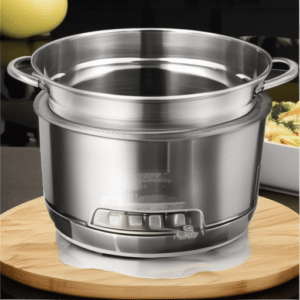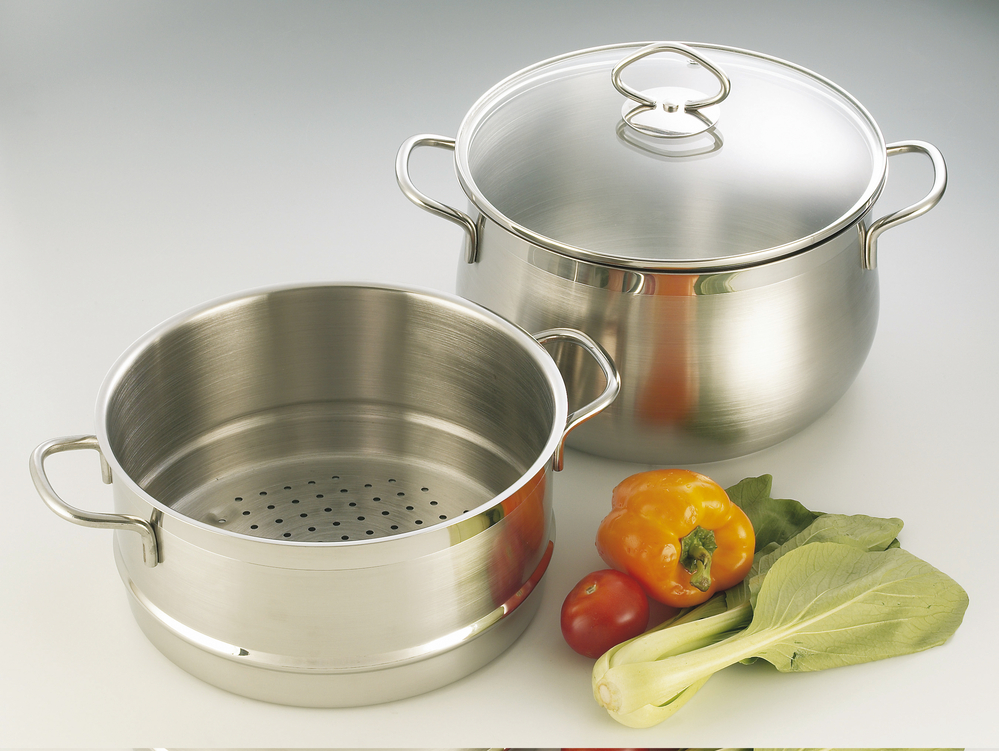If you’re wondering how to clean a food steamer after using one of these products to cook your latest meal, you’re not alone. While a vegetable steamer or food steamer can be an excellent resource for cooking your favourite ingredients, cleaning these tools isn’t always easy.
A food steamer has a variety of features, whether it is used on a stovetop or an electric one. For these features to keep functioning at their best, proper cleaning and maintenance are necessary.
If you’re worried about cleaning your steaming container correctly, the following tips should give you all the insights you need to wash this appliance.
How to Clean Your Steamer

Steaming can come in several different styles, from the complex commercial steamer products used in company kitchens to the simple stainless steel device to cook your vegetables every evening. If you’re cleaning a manual steaming basket, you can usually place the steaming basket in a full sink of hot soapy water and wash it as normal to get rid of grime daily.
You’ll need to remove your steamer container from the other components in an electrical steamer before exposing it to hot water. The last thing you want is to get water into a power source on your appliance when you wash your device.
Remember, check the instructions on the device you’re going to be cleaning to see whether it’s suitable to place a steamer reservoir or basket into a dishwasher. You might assume a device that can deal with steam can deal with heat and steam, but this isn’t always the case. Most experts will recommend washing these cooking utensils by hand.
How Do You Clean the Inside of a Steamer?
Cleaning the inside of your steaming device doesn’t have to be as complex as it seems. The first step is waiting until your steamer is cool before you begin doing anything. Steaming vegetables and meats can get your appliance very hot, so don’t try to jump in too quickly.
If you are using a manual steam basket, you can put it and the lid of your cooking pan into a sink of hot soapy water to soak after each meal. Here are a few steps by step instructions for better cleaning.
Step 1: Empty the Steamer
Ensure all the food is gone from inside the cleaner before you begin to soak it in hot water or pour some soap into the mix. You can empty the reservoir by rinsing it with water. Make sure to remove the plug from the power if you’re using an electric appliance.
Your cooking utensil needs to be completely turned off and cool before you begin washing. Remove any water from the drip tray left in your container and the water box.
Step 2: Soak the Steamer
Make sure you don’t get any water into the electrical components of your food steamer, and soak the washable parts of the machine in the sink with hot water.
Allowing your steamer to soak in hot water and soap solution should be enough to eliminate any extra food pieces sticking to the inside. You can soak both a manual and electric steamer in a sink you fill with water. However, keep the plug and lead out of the sink if using an electric steamer.
If you’re soaking an electric steamer, you’ll also need to place the lid, the inner steaming container, and the drip tray in the water with some soap to soak. You can leave difficult stains to soak for up to twenty minutes.
Step 3: Wash the Steamer
Rinse your steamer to dislodge any remaining food, and use a dishcloth or soft sponge to scrub anything that still needs to be cleaned. A damp cloth is enough to clean most of the vegetable steamer’s parts. Once you’re sure, remove all the food stuck to the steaming components, rinse again and leave the components to dry.
Please keep in mind that your steamer basket or components should be completely dry before placing them in a cupboard or back into the steaming machine.
How Do You Remove Limescale From a Food Steamer?

Like a kettle or other products that use boiling water and steam, a vegetable steamer can build up mineral deposits over time. If you live near a sea environment, calcium deposits and limescale are likely to be common problems because high salt contents tend to corrode electronic devices, including electric steamers.
To get rid of calcium buildup on your steamer:
- Check the element for heating regularly. If you notice calcium deposits, pour three cups of white vinegar into the steamer reservoir until below the fill mark.
- Turn the food steamer on and allow it to heat for around 20 minutes.
- Unplug the steamer and give it plenty of time to cool before rinsing the system with cold water.
Some people find using a mixture of half vinegar and half distilled water is just as effective at removing calcium. However, you may need to heat this mixture for longer to use the resulting steam to clean away the limescale. Cleaning your steamer with steam alone is unlikely to do excellent without vinegar.
Clean Your Steamer Correctly!
And that’s it! Remember that when you clean your steamer with vinegar, it’s important to fill the basket with water and thoroughly rinse the internal components. After filling your container with white vinegar, failing to clean away the mixture with warm water can leave an odd taste. If your white vinegar mixture doesn’t immediately remove the calcium buildup on your steamer, remember you may need to go through the same process a couple of times.
Taking your sweet time to clean your steamer correctly after every use should reduce the risk of baked-on calcium deposits and other substances damaging an essential kitchen appliance. You should also be checking the heating element responsible for creating steam regularly for signs of damage beyond limescale and calcium buildup.
With these helpful guides, you’ll be surely confident you’re eating nutritious, clean food with the help of a food steamer.

